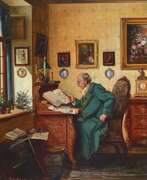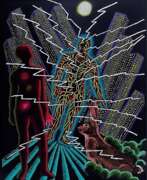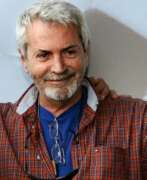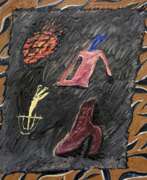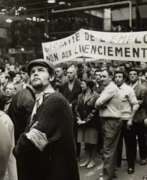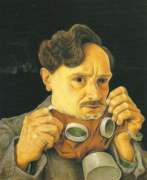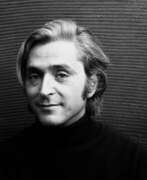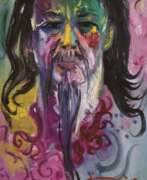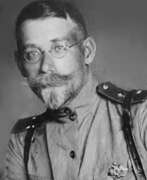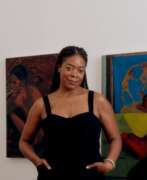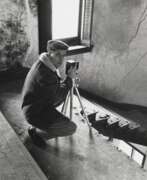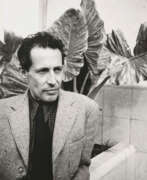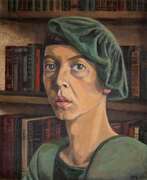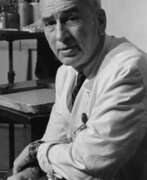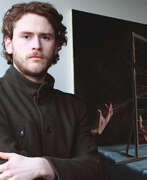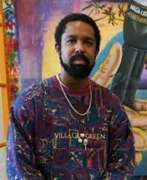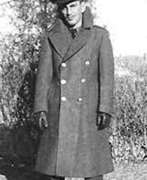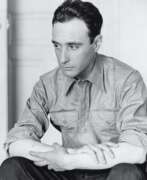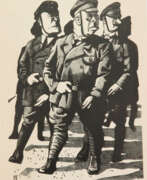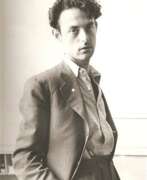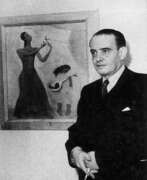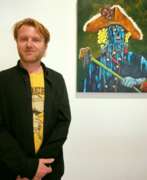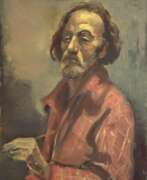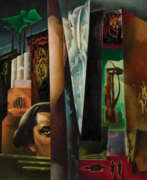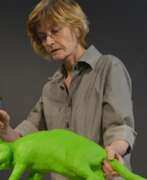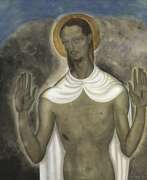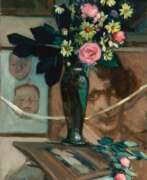Genre art Surrealism
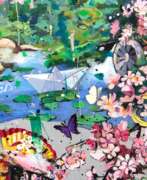

Angelo Accardi is a contemporary Italian artist. He grew up surrounded by both modern and traditional art. Although he studied fine art at the Art Academy of Naples, he never completed his training. Angelo Accardi illustrates surreal visions of everyday life under realistic backdrops of urban and natural landscapes. There is never a single meaning, but a whole story behind each painting. Ironic, striking, and playful, Accardi’s unique perspective and avant-garde style is a result of his diverse inspirations.
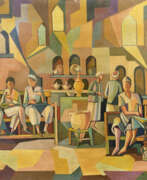

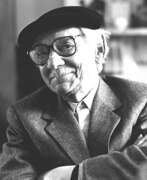

Manuel Álvarez Bravo was an Mexican visionary photographer whose work vividly illustrates the cultural heritage of Latin America. His unique perspective on life and superb photographic skills have inspired generations of photographers around the world.
Alvarez Bravo was known for his experiments with light and shadows, composition and form. His surreal photographs were often full of mystery and enigma, while also reflecting the difficulties and contradictions of Mexican society in the first half of the 20th century.
Alvarez Bravo's work marvellously combined aesthetic beauty with profound social context. His work is not only inspiring in its beauty but also a reminder of the importance of preserving peoples' cultural heritage and history.
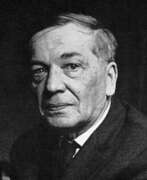

Mikhail Fedorovich Andrienko-Nechytailo (Russian: Михаил Фёдорович Андриенко-Нечитайло) was a Russian artist known for his contributions to the avant-garde movement. Born in 1894, he became renowned for his innovative approach to painting, stage design, and illustration. Andrienko-Nechytailo’s work is celebrated for its unique blend of Constructivism and Cubism, which set him apart from his contemporaries.
One of his special features was his ability to combine geometric forms with a vibrant color palette, creating visually striking compositions that challenged traditional artistic conventions. His works often explored themes of abstraction and the intersection of art and technology. His notable pieces are housed in prestigious collections, including the Tretyakov Gallery in Moscow and the Russian Museum in Saint Petersburg.
Collectors and art experts admire Andrienko-Nechytailo for his visionary approach and lasting impact on modern art. His legacy continues to influence contemporary artists and is a testament to his skill and creativity.
Sign up for updates on new product sales and auction events related to Mikhail Fedorovich Andrienko-Nechytailo. Stay informed about opportunities to add his remarkable works to your collection.
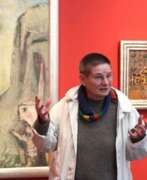

Dorothee Bachem is a German-born, distinctive artist and writer who runs a studio in Flensburg.
Bachem studied art at the Berlin University of the Arts and works in various techniques - multi-layered painting, collage, printmaking.
With her unique poetics, Bachem creates surreal, dreamlike, timeless picture stories in which the influence of Picasso and Cubism can be read.
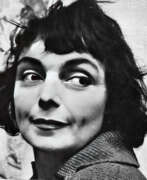

Bele Bachem (real name Renate Gabriele Bachem) was a German painter, graphic designer, book illustrator, interior designer and writer. In 1997 Bachem was awarded the Order of Merit of the Federal Republic of Germany.
Bachem is considered one of the most important post-war German artists and one of the few surrealists in the illustration of German literature.
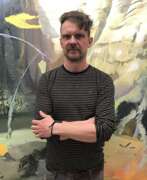

Tilo Baumgärtel is a German artist who lives and works in Leipzig.
His paintings go back to the works of social realism and large-format propaganda posters. The artist works with a variety of mediums and techniques. In addition to painting, he also uses lithography, drawings on paper, and video. Pictorial space and the creation of sometimes surrealistic landscapes is one of his central themes.
Tilo Baumgärtel also collaborates with theaters, developing sets and videos on scenography.


Hans-Ulrich Buchwald was a German painter, graphic artist, ceramist, stage designer and mask maker. His oeuvre comprises about 10,000 drawings, woodcuts and linocuts, paintings, ceramics, wooden sculptures and masks. It is characterised by a variety of artistic forms of expression. Buchwald felt committed to classical modernism, which he only became acquainted with after the war. He was inspired by George Grosz, Pablo Picasso, Edvard Munch, August Macke, Franz Marc, Oskar Schlemmer, Fernand Léger, but sought his own style in various fields.
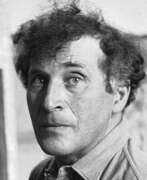

Marc Chagall (Russian: Марк Заха́рович Шага́л), born Moishe Shagal in 1887 near Vitebsk, Belarus (then part of the Russian Empire), was a Belarusian and French artist celebrated for his pivotal role in the avant-garde movement and his unique integration of Eastern European Jewish culture into modern art. His contributions spanned several artistic formats including painting, stained glass, stage sets, ceramics, tapestries, and fine art prints. Chagall's early modernist tendencies were enriched by his experiences across Saint Petersburg, Paris, and Berlin before World War I, leading to a distinctive style that melded Cubism, Symbolism, and Fauvism with his Jewish heritage.
Chagall's work is recognized for its emotional depth, often exploring themes of love, memory, and Jewish folklore through vibrant colors and dreamlike imagery. Notably, art critic Robert Hughes described him as "the quintessential Jewish artist of the twentieth century," a sentiment echoed by art historian Michael J. Lewis who regarded Chagall as a significant figure within European modernism and as the world's preeminent Jewish artist of his time.
Among Chagall's famed contributions are his stained-glass windows for the cathedrals of Reims and Metz, the UN, and the Jerusalem Windows in Israel. His monumental paintings include parts of the ceiling of the Paris Opéra and works that explore biblical themes, a hallmark of his oeuvre that underscores his enduring engagement with spiritual and religious motifs.
For art collectors and antiques experts, Chagall's works are notable not only for their artistic innovation but also for their rich cultural and historical significance. His art is housed in many prestigious museums worldwide, including the Marc Chagall National Museum in Nice, France, which focuses on his works inspired by religion and houses the series of paintings illustrating the biblical message.
For those interested in exploring Chagall's legacy and the vibrant intersection of culture, art, and history his work represents, signing up for updates on new product sales and auction events related to Marc Chagall can provide invaluable insights and opportunities. This is an invitation to engage more deeply with the world of art and culture that Chagall so uniquely encapsulated in his work.


Gregory Crewdson is an American photographer. He photographs tableaux of American homes and neighborhoods.
Crewdson's photographs are elaborately staged and lit using crews familiar with motion picture production and lighting large scenes using motion picture film equipment and techniques. Using shots that resemble film productions, Crewdson deconstructs American suburban life in his work.
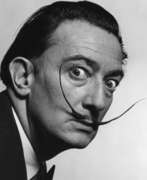

Salvador Dalí, a Spanish Surrealist painter and printmaker, is celebrated for his vivid and imaginative works that delve into subconscious imagery. Born on May 11, 1904, in Figueres, Catalonia, Spain, Dalí's early exposure to Impressionism and Renaissance masters significantly influenced his artistic development. His education in fine arts in Madrid further shaped his style, leading him to experiment with Cubism and avant-garde movements. In the late 1920s, Dalí embraced Surrealism, joining the Surrealist group in 1929 and rapidly becoming one of its most prominent figures.
Dalí's most famous work, "The Persistence of Memory," completed in 1931, epitomizes the Surrealist movement with its iconic melting clocks symbolizing the fluidity of time. His artistic repertoire was diverse, including painting, graphic arts, film, sculpture, design, and photography, often incorporating themes of dreams, the subconscious, sexuality, religion, and science. Despite his remarkable artistic contributions, Dalí's eccentric and flamboyant public persona often overshadowed his work. He faced criticism for his public support of the Francoist regime and the authenticity of some of his late works.
Dalí's legacy is preserved in major museums, notably the Dalí Theatre-Museum in Figueres and the Salvador Dalí Museum in St. Petersburg, Florida. These institutions showcase his extensive and varied body of work, illustrating his profound impact on Surrealism, pop art, and contemporary artists.
If you're captivated by the surreal world of Salvador Dalí and want to stay informed about new sales and auction events featuring his works, sign up for our updates. Our service is tailored specifically for art collectors and experts, providing timely information and insights into the vibrant market of Dalí's art. Remember, this subscription is focused solely on bringing you the latest in product sales and auction events related to Salvador Dalí. Don't miss out on the opportunity to enrich your collection with pieces from one of the most influential surrealists of all time. Sign up now and be the first to know about these exclusive events.
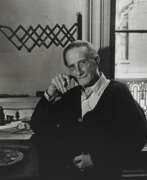

Henri-Robert-Marcel Duchamp, a pioneering French artist, is celebrated for his profound influence on 20th-century art and culture. Duchamp's work transcended traditional mediums, embracing painting, sculpture, and conceptual art, thereby redefining the very nature of artistic creation. His audacious approach to art, marked by intellectualism and wit, challenged conventional perceptions of beauty and utility, making him a central figure in the development of modern and postmodern art.
Duchamp's most notable contributions include his ready-mades—ordinary manufactured objects that he selected and presented as art. This innovative concept questioned the role of the artist and the creation process, exemplified by his famous piece, "Fountain," a porcelain urinal that radically altered the landscape of art by its mere presentation in 1917. His other significant works, like "Nude Descending a Staircase, No. 2," showcased his fascination with movement and mechanization, further cementing his legacy as a visionary.
Duchamp's influence extends beyond his creations, as he played a vital role in shaping the Dada movement and conceptual art. His ideas and artworks continue to inspire artists, collectors, and experts in the fields of art and antiques. Museums and galleries worldwide, including the Philadelphia Museum of Art and the Museum of Modern Art in New York, proudly house his works, attesting to his enduring relevance.
For those keen on exploring the intersections of art, culture, and history, Duchamp offers a rich tapestry of innovation and controversy. Collectors and art enthusiasts are invited to sign up for updates on new product sales and auction events related to Henri-Robert-Marcel Duchamp, ensuring they remain at the forefront of developments in this captivating domain.
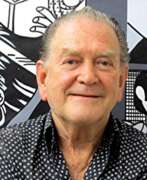

Erro, real name Guðmundur Guðmundsson, is a contemporary Icelandic painter.
Erro studied painting at the Reykjavik and Oslo Art Academies between 1952 and 1954. He then moved to Italy, where he studied mosaic art in Florence and Ravenna until 1958.
Erro participated in the Venice Biennale in 1986. In 1989 he donated a large part of his works to the Reykjavik Art Museum.
The style of the paintings created by Erro lies on the border between surrealism and pop art. The main theme of his paintings is the depiction of modern civilisation, its technical perfection and its inhumanity. He also uses comic book techniques and science fiction themes in his work.
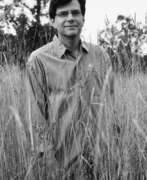

Rob Gonsalves was a Canadian artist celebrated for his unique approach to magical realism, a genre where magical elements blend into the mundane to reveal a deeper reality. Born in Toronto, Gonsalves had a profound interest in art from a young age, with a keen focus on architecture which later heavily influenced his artwork. He explored various media but is best known for his acrylic paintings on canvas that took 3-4 months to complete, each embodying an autobiographical, symbolic narrative that invited viewers into mesmerizing, alternative realities.
Gonsalves's art is recognized for its magical realism, blending the real with the fantastic in an uplifting manner, distinct from the often grim surrealism. His work, inspired by Rene Magritte, captures the beauty in shadows and light, portraying the world through an imaginative and romantic lens. He was meticulous in planning his paintings, spending a significant amount of time on preliminary sketches to ensure the illusions worked as envisioned. His notable works include "Sun Sets Sail," "Still Waters," and "Arboreal Office," each demonstrating his skill in creating mind-bending optical illusions that challenge the viewer's perception.
His contributions to art were recognized with the Governor General's Award in 2005 for his illustrations in the children's book "Imagine A Day." Sadly, Gonsalves's life came to a tragic end in 2017; however, his legacy continues through his impactful art and the efforts of his widow, Lise Carruthers, to preserve his work for future generations. Gonsalves's paintings are held in private collections worldwide, and his books, including "Imagine a Night" and "Imagine a World," continue to inspire with their magical narratives.
For collectors and enthusiasts keen on exploring Rob Gonsalves's enchanting world, updates and availability of his works can be found at dedicated art galleries and through his published books. To stay informed about new product sales and auction events related to Gonsalves's art, signing up for updates is highly recommended. This ensures you'll be among the first to know when new opportunities to acquire pieces of his magical realism arise.


Uwe Henneken is a German artist living and working in Berlin.
Henneken began his studies at the State Academy of Fine Arts in Karlsruhe and completed his studies at the University of the Arts in Berlin. In his grotesque, amusing and fabulous paintings and sculptures, the artist transports the viewer into strange worlds. Especially impressive are the brightly colored landscapes, as in a surrealistic fever dream. In these psychedelic sets move figures unimaginable in reality, sometimes comic and cartoonish, sometimes tragic, and sometimes both at the same time.
Henneken has spent a lifetime researching the theme of shamanism and believes that the shaman is the prototype of the artist and therefore the contemporary artist is directly connected to his professional ancestor. Promoting the idea of otherworlds, through magical realism the artist brings magic to real life.
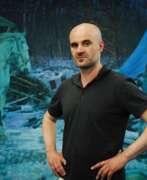

Aris Kalaizis is a German artist of Greek origin. He studied painting at the Leipzig Academy of Fine Arts.
Aris Kalaizis gained international recognition after taking part in the 2010 Venice Biennale (Mostra Internazionale di Architettura) and in the 4th Triennale in Guangzhou, China in 2011.
Calaisis creates his works by assembling elaborate spatial compositions and constructing large-scale scenes on the site of an imaginary action. In the process, he takes a series of preparatory photographs from which the final work is constructed. The scenes in his paintings, which often have a surrealistic impression, are developed from ideas that Kalaisis develops in the manner of a screenplay. The result of this step-by-step creative process are pictorial works that embody desired images of the inner world in line and colour.


Geliy Mikhailovich Korzhev (Russian: Гелий Михайлович Коржев), a Soviet and Russian painter born on July 7, 1925, is remembered for his dedication to the Socialist Realism style, and his artworks echo the significant historical events of 20th-century Russia. His upbringing in a family deeply embedded in the arts, with a father who was a pioneer in Soviet landscape architecture and a mother who taught literature for four decades, undoubtedly shaped his artistic journey. Korzhev's formal art education began at the Moscow State Art School, under renowned tutors such as Vasily Pochitalov and Sergey Gerasimov, followed by the Moscow State Art Institute.
Korzhev's career was marked by his unwavering commitment to Communist ideals, even refusing a state award in the late 1990s from the Russian Federation, to stay true to his beliefs formed under the Soviet Union. This principled stance, alongside his detailed diaries and reflections, offers a deep insight into the man behind the canvas. His masterpieces, such as "Clouds of 1945" and "Conversation," not only demonstrate his skill but also his capacity to encapsulate complex historical and philosophical themes within his art.
The legacy of Korzhev's work is divided between prestigious Russian institutions and private collections worldwide, making his contributions to art a subject of both national pride and global appreciation. As collectors and experts in art and antiques, understanding Korzhev's influence requires recognizing both his artistic prowess and his deep-seated ideological beliefs that informed his work throughout his life.
For those intrigued by the intersection of art, history, and ideology, Korzhev's oeuvre offers a compelling study. Sign up for updates to stay informed about new product sales and auction events related to Geliy Mikhailovich Korzhev's remarkable art.
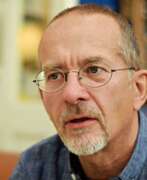

Axel Krause is a German painter and graphic artist who works with acrylics and oils, typical of the artists of the New Leipzig School. In his paintings the viewer sees interiors, landscapes and atmospheric scenes and subjects with elements of mystery and surrealism.


Rosa Loy is a German artist, representative of the "New Leipzig School of Painting", living and working in Leipzig.
She was educated at Humboldt University in Berlin and studied at the Academy of Visual Arts in Leipzig. Rosa Loy is one of the few artists in Germany working with a new femininity in the style of New Romanticism. Her characters live in a world of fantasy, dreams and folklore, in colorful surreal and symbolic settings.
Loy boldly combines femininity and beauty in her figurative paintings. Her work also reflects her relationship with her husband Neo Rauch. Together they are internationally known as a successful creative couple. They both have their own independent works, which are nevertheless influenced by each other and can successfully combine the forces of masculinity and femininity.
Rosa Loy works in casein on canvas and paper and is also proficient in a variety of graphic techniques. She has participated in numerous exhibitions of Leipzig artists in international art museums. In addition, her work is included in the collections of major art institutions and organizations such as the Museum of Modern Art, New York, the Museum of Contemporary Art, Los Angeles, and the Deutsche Bank Collection.


Ricardo Martínez de Hoyos was a Mexican painter noted for his figurative work on unreal atmospheres. He was one of several children from a very large family to make a mark in his field, along with Oliverio in sculpture and Jorge in acting. His work was exhibited in various parts of the world, featured in collective tours of Mexican art. Individually, he exhibited mostly in Mexico including important venues such as the Museo de Arte Moderno and the Palacio de Bellas Artes, which held a tribute to the artist in 1994. Since his death, a cultural center named after him has been established in the historic center of Mexico City.
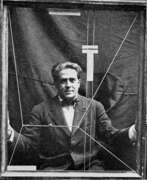

Francis Picabia, born Francis-Marie Martinez de Picabia, was a French avant-garde painter, poet, and typographist, whose work is celebrated for its diversity and innovation. His journey through various art movements, including Impressionism, Cubism, Dadaism, and Surrealism, showcases his refusal to be confined by any one style. Picabia's art is known for its eclectic nature, often blending mechanical elements with organic forms, thereby challenging traditional perceptions of art and beauty.
Picabia's significant contribution to the art world lies not just in his varied artistic output but also in his philosophical approach to creation. He believed in the freedom of expression, often using his art to critique societal norms and the art establishment itself. This rebellious spirit made him a pivotal figure in the Dada movement, where his works were celebrated for their irony and disdain for conventional art values.
Among his notable works, "Amorous Parade" and "I See Again in Memory My Dear Udnie" stand out, housed in prestigious institutions like the Museum of Modern Art in New York. These pieces exemplify Picabia's mastery over blending different elements of art movements, creating works that remain influential to this day. His legacy is not just in the pieces he created but also in his attitude towards art, encouraging future generations to challenge and redefine the boundaries of creativity.
For collectors and experts in art and antiques, Picabia's works represent not only significant artistic achievements but also valuable insights into the evolution of modern art. To stay informed about new product sales and auction events related to Francis Picabia, sign up for updates. This subscription is an essential resource for enthusiasts looking to enrich their collections with pieces from one of the most innovative artists of the 20th century.
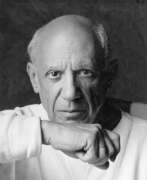

Pablo Ruiz Picasso, a Spanish artist renowned for his revolutionary contributions to the 20th-century art scene, is a figure that resonates profoundly with collectors and art experts. His unique blend of talents in painting, sculpture, printmaking, and ceramic art, infused with his time in France, positioned him as a pivotal character in modern art history.
Picasso's artistic journey was marked by distinct periods, each showcasing his evolving style and genius. His early years were characterized by the Blue Period (1901-1904), followed by the Rose Period (1904-1906), and then the African-influenced Period (1907-1909). Picasso's name is synonymous with Cubism, a movement he co-founded, which significantly altered artistic perspectives and methods. Works like "Les Demoiselles d'Avignon" (1907) and "Guernica" (1937) are emblematic of his cubist legacy, the latter being a poignant anti-war statement that remains influential.
His later years saw a return to more traditional styles, with neoclassical and surrealist influences becoming evident. Works from these phases reflect a deep engagement with mythological themes, as seen in "Faun with Stars" (1955), symbolizing his late-life romance with Jacqueline Roque, his second wife.
Picasso's prolific output and innovative spirit made him a legend in his own time, a status that only grew after his death. His works, housed in major museums and private collections worldwide, continue to captivate and inspire.
As a collector or expert in art and antiques, staying informed about Picasso's works, their auction events, and sales is essential. To stay updated on the latest developments and opportunities related to Pablo Picasso, sign up for our specialized updates. Rest assured, this subscription will focus solely on new product sales and auction events pertaining to Picasso's art, ensuring that you receive only the most relevant and valuable information.


Ernest Pizzotti was a Swiss painter-painter and graphic artist. His work was mainly influenced by the 1920s and 30s, when the key innovations of the early twentieth century continued to develop and evolve. Surrealism became the prevailing expressive fashion of the 1920s.


Leopold Rabus is a Swiss surrealist painter whose favorite medium is oil painting. He depicts the surrounding reality, inhabiting it with surrealistic birds, snails and yard animals, or ordinary objects. The people in Rabus's paintings, on the other hand, are often insane and horrible, but they live ordinary human lives.
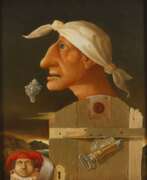

Hans Reiser is a German surrealist artist and caricaturist who lives and works in Reichersboerne.
Hans Reiser studied at the Academy of Fine Arts in Munich and has been drawing weekly cartoons for the Telzer Kurier since 1970. His work has also been published in many newspapers and magazines. Since 1979, the artist has participated in numerous exhibitions at home and abroad.
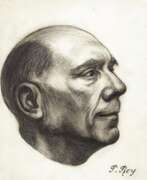

Pierre Roy was a French surrealist painter. He is known for his realistically painted compositions of ordinary objects in unexpected arrangements. After gaining his baccalauréat at the local school he joined a firm of architects before enrolling at the Ecole des Beaux-Arts in Paris. Disappointed with the course, he left to work on the designs for the 1900 Paris Exposition.
His work is classed as surrealism, and is based on assemblages of everyday objects such as shells, vegetables and fruits, woollen reels, ears and seeds, eggs and ribbons arranged to create poetic images.
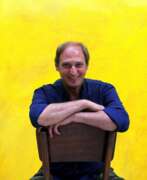

Maurizio Savini is an Italian artist and sculptor specializing in the use of chewing gum as a material for his artworks, living and working in Rome.
His sculptures are whimsical and surreal at the same time, underpinned by social and political aspects that refer to a broader reflection on the ecological consequences caused by human actions. For his work, Savini uses pre-packaged finished product from factories.


Norbert Schwontkowski is a German painter. He studied freehand painting at the University of Design in Bremen and at the University of Fine Arts in Hamburg.
Norbert Schwontkowski's work lies between abstraction, realistic representation and caricature. He mixes the unconscious and surreal with the real, the figures and subjects in the artist's paintings resemble complex dreams.
Schwontkowski created his paints from hand-crushed pigments mixed with various materials to produce a multitude of textures.
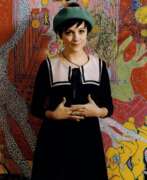

Dasha Shishkina (Russian: Даша Шишкина) is an American artist originally from Russia.
She studied at the Parsons School of Design and became known for large-scale compositions in mylar that are populated by comic and grotesque characters in psychedelic scenes. In Shishkina's paintings, elegantly dressed women with blank faces sit cross-legged, stand behind counters, talk among themselves like at a ball, or reflect alone, lingering in erotically charged poses as if turning into each other. It all feels like a strange surreal dream, subtly sexual and violent, thought-provoking, simultaneously irritating and soothing.
Dasha Shishkina works in acrylic, gouache, pastel, pencil, graphite and ink, as well as creating etching prints. Her drawings are often applied to both sides of clear Mylar polyester film.


Ferdinand Staeger was a Czech-born German symbolist painter and graphic artist, illustrator and fabric designer.
Staeger studied at the School of Technical Design in Brno and then the School of Applied Arts in Prague, from 1908 he lived in Munich and collaborated with the magazine Jugend. He was a participant in the First World War, his war drawings are characterized by humanity. After the war he illustrated books by Gerhard Hauptmann, Josef von Eichendorff, Eduard Mörike and Adalbert Stifter with great success.
During the Third Reich, Staeger collaborated with the authorities by painting several propaganda pictures, for which he was awarded the title of professor. In 1943 he lost his home in Munich to Allied bombs and many works were lost.
After World War II, he painted in an impressionist style, creating paintings of mythical, mystical, symbolic and religious themes. Many works belong to the genre of "magic realism". Staeger is also known as a tapestry designer, master of etching and ex-libris, and was a member of the Association of German Artists. His wife Sidonie Springer (1878-1937) was also a painter and graphic artist.
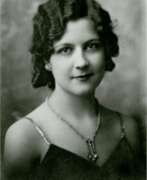

Dorothea Margaret Tanning was an American surrealist painter, printmaker, sculptor, writer and poet.
In 1935 Dorothea came to New York and worked as an advertising artist until she was inspired by the paintings of the famous Surrealists at an exhibition. She began to paint and exhibit and made numerous acquaintances among contemporary artists. In 1946 she married the artist Max Ernst, and this marriage lasted 30 years. They lived in Paris for a long time, and after his death in 1976, she returned to New York.
As an artist, Dorothea Tanning was self-taught, and her style was constantly changing. At first close to surrealism, by the late 1960s her paintings had become almost entirely abstract. Among her artistic accomplishments are paintings, prints, sculpture, stage design, costume and set designs for ballets, and her work has been exhibited at the Guggenheim Museum, the Metropolitan Museum of Art, the Tate Modern, and the Philadelphia Museum of Art.
In the late 1980s, Tanning began writing poetry, and her work has subsequently been published in various publications. Her first collection of poems, A Table of Content, was published in 2004. The multifaceted and versatile artist died in New York City at the age of 101.
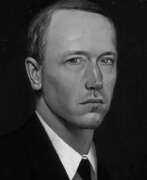

Konstantin Alexeyevich Vasiliev (Russian: Константин Алексеевич Васильев) was a Soviet artist of the mid-twentieth century. He is known as a painter, graphic artist and illustrator, famous for his works on Bylin and mythological themes.
Konstantin Vasiliev was influenced by surrealism and abstract expressionism in the early 1960s, but later shifted to a realist style. He found inspiration in folk art, myths, bylinas, fairy tales, Slavic, Scandinavian and ancient Germanic epics. He also created works dedicated to the Great Patriotic War, landscapes and a series of graphic portraits of composers and musicians.
